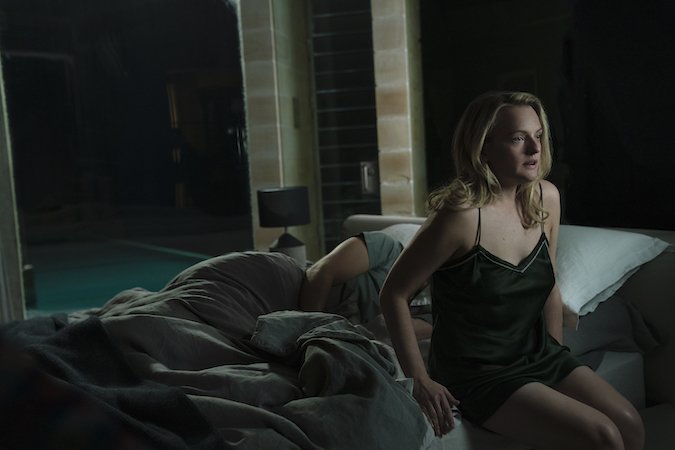
Benjamin Wallfisch: I start every project the same way which is with a conversation with a filmmaker about what it is that they’re trying to achieve with the story. Even if it’s part of a pre-existing franchise or remake, there’s always a new attitude and I try to make sure that the very first sketches I make are with that in mind—what is this filmmaker trying to do that is unique to this film?
And, of course, when there’s already such an iconic work—just genius work—like the original Blade Runner score which is so integral to the feeling of the movie, there’s also the question of how do you acknowledge that sound while also completely updating it for this brand-new story?
In the situation of Blade Runner 2049, Hans [Zimmer] and I were fully on the same page as Denis [Villeneuve] with this completely new take on what is already an established world. He’s such a visionary filmmaker and has such an inspiring way of communicating about music. There was a lot of freedom within the Blade Runner world to reinvent and reimagine.

The Invisible Man, starring Elisabeth Moss, is scored by Benjamin Wallfisch.
In the case of the IT movies, I very deliberately did not listen to (my good friend) Richard Bellis’ score because I knew it was such an extraordinary piece of music that I didn’t want to be influenced by it. I hadn’t seen the miniseries before I worked on the movies and I just kept deliberately avoiding it, though I had read the book.
I think it’s important to not be influenced by something if it’s a completely new approach like the new IT films. They’re a very different structure from the miniseries and similarly with Annabelle: Creation, David Sandberg had a completely fresh attitude to that franchise and—because it’s more of a period piece—he wanted to make the score much more acoustic and orchestral than the previous scores.
So, with each project I try and bring the same attitude which is to just have a blank canvas and imagine that you have no idea what you’re doing—rediscover the act of writing music for each new film, which can be quite painful, but then everything ends up feeling unique and totally bespoke to that particular story.
MM: How did The Invisible Man end up in your lap?
Benjamin Wallfisch: I came into that project relatively late. I got a call to come on board and meet director, Leigh Whannell and, once I saw the movie, I immediately knew it was something I wanted to do. Elisabeth Moss’ performance is so extraordinary, so strong, visceral, and original. I hadn’t seen something like that in a long time. The way this film plays as a thriller is quite unique.
I had a wonderful, musical canvas to work in. I could just immediately hear in my head the music that might work. I was really excited about the potential of the film. What was great was that Leigh sent me a full cut of the film with absolutely no temp music—it was completely silent, musically. We then spotted the film together in huge detail, every moment was very carefully discussed. It was really lovely to not have any temp and be given this fresh canvas.
Leigh was pushing me to be very extreme and left field in some of the music choices. For example, the electronic sound theme, if you will, for the Invisible Man character we pushed to an extreme. I also wanted to make it a little love letter to my hero Bernard Hermann by using just a string orchestra in the same way that he did with the Psycho score. The strings are the main thrust of the orchestra and that means they have to work all that much harder and be pushed to their max without the support of French horns, woodwinds and other instruments.
MM: Over the years you’ve been quite open about the various ways in which directors have worked with you. On A Cure for Wellness, you’ve talked about how Gore Verbinski brought you directly into the cutting room to do your work. What kind of working relationship did you establish with Leigh Whannell on The Invisible Man?
Wallfisch: Leigh is such a visionary filmmaker. He had such clarity about what he did and didn’t want the score to be. He was looking for something quite stylized—a score that would play very much like another character in the film and not just something in the background.
He also wanted us to be very judicious with how we used silence. We used silence as a rhythmic event, similar to when you see something very bright and then close your eyes and you can still see the ghost of it—we were trying to do that with the but with the music. When you do hear the score it’s very bold and extreme and slightly unexpected and, so, when there’s silence you really feel it as silence. You almost don’t trust the silence which was an interesting mood to try and capture.
We were crafting that approach right down to the final dub. But working with Leigh was a dream collaboration. He was open to all sorts of crazy ideas that I threw at him. He really let me do my thing but with such clarity in his direction. He’s also a very funny guy. We had a lot of laughs.
MM: The concept of working with silence is fascinating because, I would imagine, many people don’t think of composers as intentionally utilizing silence. We often just focus on the music, but what’s around that music can be just as significant. Was deliberately working with and around silence an approach you had used in past works?
Wallfisch: I always think about it when you’re spotting a film because I try to create a logical structure or arc to a score. Sometimes there’s music all the way through, but even then there’ll be peaks and valleys where maybe there isn’t actual silence, but the music isn’t very active. It’s important for me because you don’t want the music to become like wallpaper and something you get used to. Also, you never want the music to snap an audience out of the story, so there’s a fine line. With The Invisible Man the antagonist is not visually present, so there’s something quite challenging about scoring for something that you can’t actually see.
Continued on next page…
Share:

